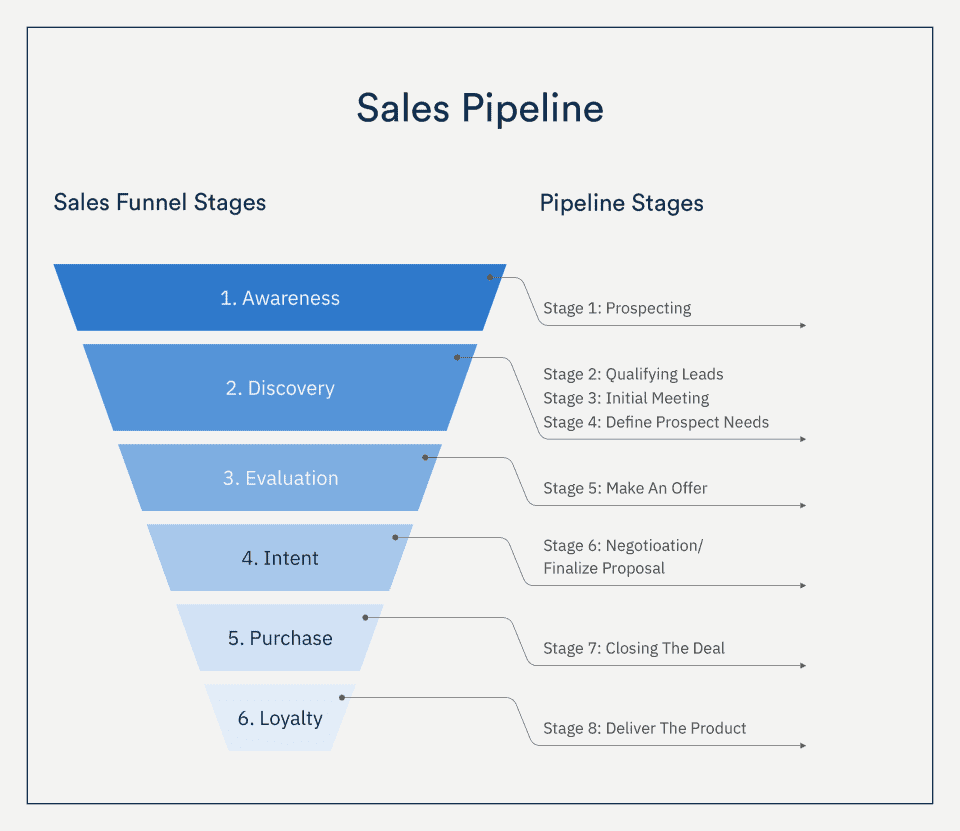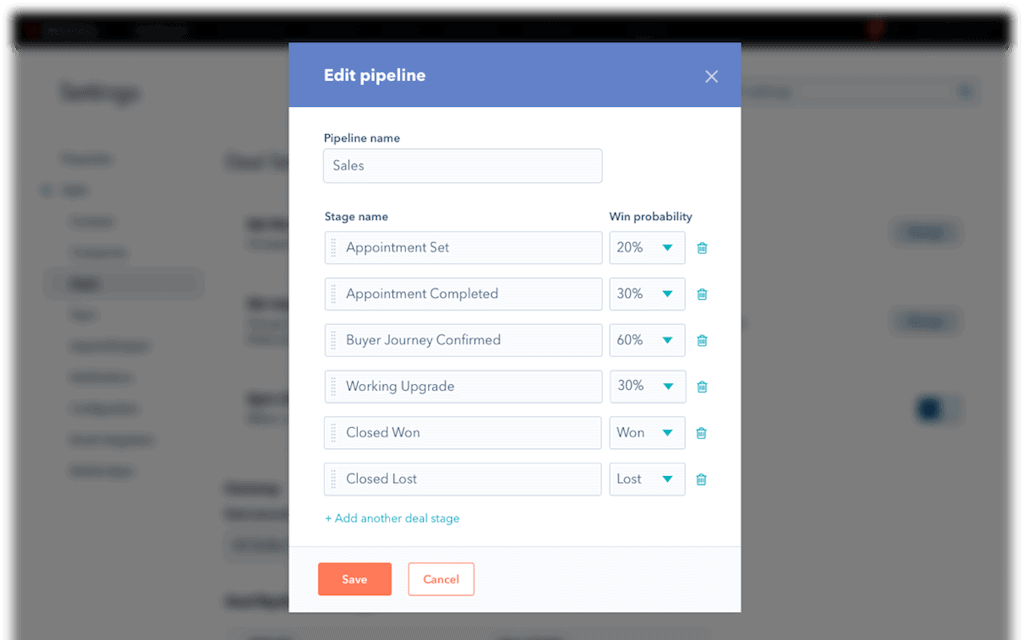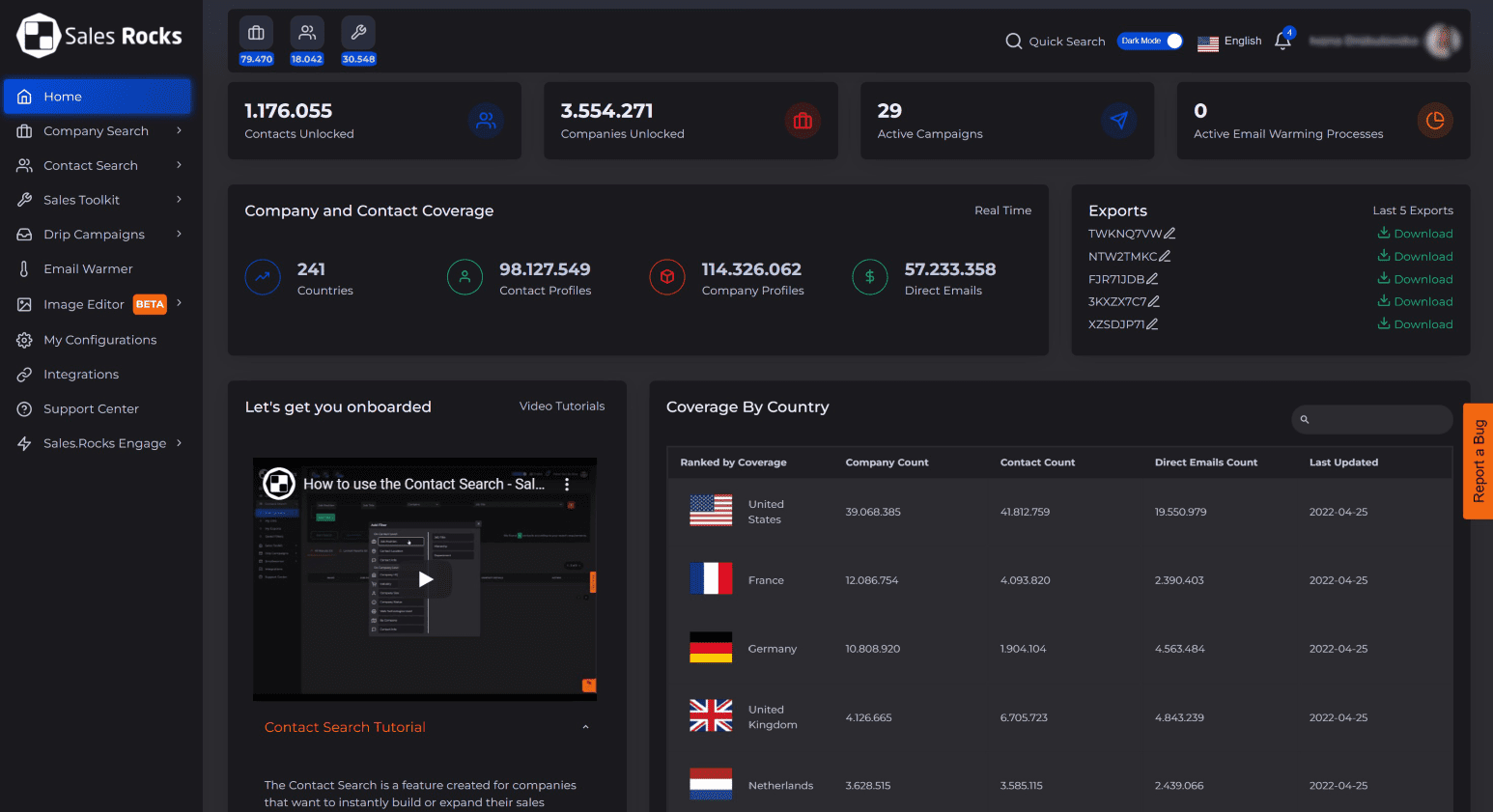Updated on January 5, 2023
Do you think being part of a sales team in software sales means your sales process should be more tiresome, difficult, and time-consuming? Well, not really – when you have a smart sales pipeline built upfront.
Yes, you need proper planning and execution to achieve the required targets and revenue goals. It feels like an everlasting quest to optimize conversion rates while performing various tasks during the sales cycle. All this can be made easier if you have an effective sales pipeline.
SaaS (software as a service) products are software applications (or platforms) hosted centrally on the internet by the provider, who then allows access to customers around the world for a monthly or yearly subscription fee.
If your organization sells SaaS products, your sales pipeline needs certain elements to work better. But before we detail the steps to set up an efficient SaaS sales pipeline, let’s get familiar with the concepts and what it entails.
What is a sales pipeline?
A sales pipeline is a visual representation of your sales inflow and where all of your prospects are currently in the sales process – from the standpoint of your sales reps. Your pipeline provides a clear picture of how many open opportunities your team has on the table, as well as the path they need to follow in order to close those sales opportunities.
How does your prospect slide from one stage to the next throughout the sales process until finally becoming a customer? That’s what a sales pipeline helps you to analyze and improve.
It is an organized way of tracking potential customers through their journey of being recognized as a lead to making a purchase and closing the deal.
Leads and prospects are moved ahead in the sales pipeline, depending on which stage they are in the sales process. For example, a positively responding user can be marked as a “qualified lead” and moved to the next stage in the sales pipeline to be pursued further.
A sales pipeline breaks down the lengthy sales cycle into trackable objectives and metrics to measure so that they can be completed more easily and transparently. This can be done through automation and sales pipeline development.
What you need to have before you can start building your own sales pipeline
A sales pipeline is basically a representation of the various potential prospects and sales deals the salesperson has at disposal and where they are currently in the purchasing stage. Having a clear picture from a bird’s eye’s view of the sales funnel is important to overlooking or neglecting any leads that could have ended up as happy customers.
Since the sales pipeline serves to organize these stages, you must have a sales plan (sales playbook) ready before starting to build your own pipeline. For Sales Managers, the pipeline can be used to view and analyze sales data and track the activities of the team. This helps them modify and optimize the sales process.
Before building a customized sales pipeline for your company, you need access to specific information such as:
-
- Target audience / Ideal Customer Profile
- Sales team and its capabilities
- Existing customer base
- Target market
- Pricing strategy
To get an insight into all of these, you should gather certain information about the company and its sales techniques.
1. Prospective Buyers’ List / B2B Lead List
Your prospective buyers are the potential customers that fit your target firmographics and ideal customer profile. They should have a business need that your product or service provides, and the means to purchase it.
Your prospective buyers’ list will include their names, contact information, email address, business type, designation, pain points, technographics in SaaS (the tech stack they use) etc. You should also mention the source of the lead.
Related read: The Best Lead Sources You Will Need to Build Your List
2. Sales Process Documentation
Your sales process is a series of steps, including all sales activities to be performed to finalize a deal. Having detailed and all-inclusive sales process documentation makes the job of sales representatives easier. These steps can be made a part of the sales pipeline and optimized accordingly.
Related read: The B2B Sales Process Explained
3. Revenue Targets
The goal of a sales team is to achieve the sales targets and continually improve the recurring revenue in a quarter or year. To design an effective sales pipeline, you should have clear revenue targets and track the required sales pipeline metrics to achieve them. For example, the number of closed deals or new customers required.
Related read: Are you winning? 5 Brutal Truths about Saas Sales Metrics
4. Aligned Sales Team
A sales pipeline works for individuals as well as the entire sales personnel, including the sales leader, the sales manager, sales development representatives, account executives, account managers, and even your remote sales reps. Hence, the sales pipeline needs to be built with input from all team members and to point them to the mutual sales goals.
How to Build a Sales Pipeline for Your SaaS Product
Now that you know the prerequisites for every sales pipeline stage, you can start building an effective sales pipeline management system for your own SaaS product following these steps.
Step 1: Take Stock of Your Prospective Buyers
As we mentioned earlier, the first thing you need for a sales pipeline is a list of potential buyers. Take a look at the leads you currently have at your disposal and then try to find new B2B customers online for a fresh flow of new leads. To manage all these leads and their interactions, you can use Google Sheets or MS Excel.
You can create suitable sales pipeline templates from the information on your spreadsheet. Alternatively, there are several CRM software options available online that can help you organize and track this data.
An amazon spreadsheet template helps to manage large volumes of data easily. It also lets you track multiple leads and arrange them based on stages or responses. A more evolved form of this spreadsheet is the CRM (customer relationship management) tool that helps you:
-
- Manage deals collectively
- Move leads to different stages of the pipeline simultaneously
- Segment prospects according to similar characteristics
- Track the number of pending and qualified leads
- Monitor individual and team progress
- Track revenue goals
Step 2: Set Up Pipeline Stages
The next step is to set up distinct stages for your sales process. After a lead is qualified, there are several actions that the sales rep can take to pursue the customer. In the absence of clear directions, this often becomes overwhelming for the salesperson and hampers their productivity.
To prevent that, set up your pipeline in a way that tracks metrics objectively and has clear stages of sales activities involving daily tasks. You can include tasks like contacting leads, negotiating with them, offering customized products and deals, etc. These tasks may vary depending on your team’s activities.
Having clear sales pipeline stages helps to set clear goals for employees and breaks down their huge targets into small achievable activities. This increases efficiency and boosts chances of success. For more productivity, you can include this part in the employee onboarding process so that new team members are also well equipped.

Step 3: Refine the Stages During the Sales Process
It is one thing to set up an initial sales pipeline. Sticking to it religiously is a different scenario altogether. When the sales reps actually go through these stages, there might be variations in their conversations with prospects that do not fit into any of the set stages.
In such a scenario, sales stages need to be modified or new stages added to make the process more efficient. For instance, if you observe that prospects frequently go silent after attending the demo call, you may have to add a follow-up stage for sales reps.
To achieve a fully optimized sales pipeline, there may be several trial and error attempts. The key is to recognize which aspects work best for your company and which need to be reworked.
Step 4: Keep Your Pipeline Updated
After you have finished setting up the sales pipeline, keeping it updated should be a consistent process. Sales teams often forget about keeping the pipeline up to date once it is set up. Some sales reps may also have difficulty getting used to the process and entering their prospect details consistently.
Using the pipeline tools regularly is one way to get habituated to the process. Another way is to consider the pipeline as your daily list of tasks that have to be completed. Once a task is complete, you move to the next stage and so on.
After the team gets used to the sales pipeline, they will have no difficulty using it for all tasks and keeping the stages updated as per requirement. In fact, the pipeline will become an indispensable tool for their job.
3 Tips for Managing Your Sales Pipeline
Sales pipeline management sounds like an elaborate task that requires time, effort, and skill. However, you can achieve it easily if you have the right tricks at hand.
1. Allocate More Resources on the Best Leads
It is a smart practice to focus on leads that have a high chance of conversion or higher revenue associated with it. As a sales rep, you must know where the maximum revenue is coming from. If not, the first step is to recognize the profitable avenues and focus your efforts there. Is it because of the right Instagram management strategy, educational content, or sending an engaging email newsletter?
Then, dedicate more resources to those leads and spend more time and effort trying to convert them. This way, you can achieve your targets in a shorter time span.
2. Set Up a Sales Process
The sales process is the base of all your efforts and sales activities. Thus, you should set up a sales process that is easy to follow for everyone on the team. Make updates and optimizations during the process and include any new practices that seem beneficial.
The sales process should be efficient, frill-free, and holistic. Once you arrive at a fully optimized sales process for your organization, you will see your revenue figures improving and mindless hard work decreasing with time.
3. Focus on Key Sales KPIs and Metrics
Key Performance Indicators (KPIs) and metrics are quantifiable measures of performance for a team or organization to achieve a specific objective. Tracking KPIs helps teams to achieve targets and perform more efficiently.
Your sales pipeline should have KPIs relevant to your workflow and targets. This is how you can keep all leads updated and achieve more in less time. The best way to measure KPIs and metrics is by setting up a dashboard to track figures such as the number of leads, revenue collected, return on sales, etc.
Keep your pipeline filled with new leads!
Let us help you with that
Required Tools for Building and Maintaining a Sales Pipeline
To create and maintain a sales pipeline, you need efficient CRM tools. Gone are the days when a spreadsheet could solve all your problems. Now, there are better and easier solutions available that help you collate and analyze all your sales data on a single platform.
Pipedrive
Pipedrive is a sales pipeline management tool best suited for small businesses. It focuses on the right deals to achieve a sale and helps you prioritize the most productive and important deals from the list. You can also track performance, predict revenue, manage call schedules, track emails, list contact history, and so on for each deal.
Pipeline helps you monitor active deals and their stages, view detailed information about each open opportunity, and highlight deals that require the most attention. You can do all this without compromising on your budget or adaptability.
Its smooth learning curve, customizations, visual representation of the sales funnel, integration with existing systems, comprehensive dashboard, and activity-based metrics make it easy and effective to use.

Hubspot
Hubspot CRM is a deals pipeline with a visual representation of all deals you are working on, their details, and their stages. You can also create tasks for certain prospects and set follow-up activities for later. This helps ensure an organized sales process so that no leads are forgotten or ignored.
Hubspot has several useful features that make it popular with users. Some of them are:
-
- Ease of learning and usage
- Inclusion of all essential features
- Customizable management of the sales pipeline
- Task scheduling
- Robust analytics
- Alerts and notifications feature
- Command center for tasks
- Data centralization

Sales.Rocks
Sales.Rocks is a sales automation tool, built upon a huge B2B database filled with business information about companies and contacts all around the world. The powerful filtering system allows you to perform automated prospecting and find your ideal customers, build complete lead lists with all the info you need and send them personalized messages.
Automated sales prospecting + cold email outreach with advanced personalization. These combined give you all the resources to maintain a sales pipeline always filled with new leads and meaningfully engage every prospect from the start to the end of the sales process.
It is a platform to assist all your sales processes through the following features:

-
- Business Database with company & contact information
- Keeping your sales pipeline with fresh leads
- Filters to find your ICP from the depths of the database
- Cold email outreach, email verifier and email warmer
- Multichannel Campaigns through email and LinkedIn
- Advanced email personalization
- AI writer for email opening lines
- Sales Academy
Sales.Rocks database combines large amounts of online data about prospects into a single platform that provides a 360-degree view of your customer. This allows you to find and identify your ideal customers, segment, analyze and qualify each potential client and use that information for meaningful outreach and lead nurturing.
Conclusion
Building an effective sales pipeline for a SaaS product is a consistent process that needs optimization and modification at various stages. It all starts with recognizing your target audience and building an actionable pipeline with sales stages that fit your business workflow.
With the right tools and resources, your sales pipeline can help organize daily tasks for sales reps, provide an insight into the overall process, track leads and deals better, remove redundancy from the workflow, and boost revenue for your business. Follow the above tips and guidelines to achieve all of this and more for your business.
Turn theory into practice with the right sales tool
Author:

Dhruv Mehta is a digital marketing professional who works as a brand consultant and provides solutions in the digital sphere. In his free time, he loves to write about marketing, SaaS & social media. Connect with him via LinkedIn.


